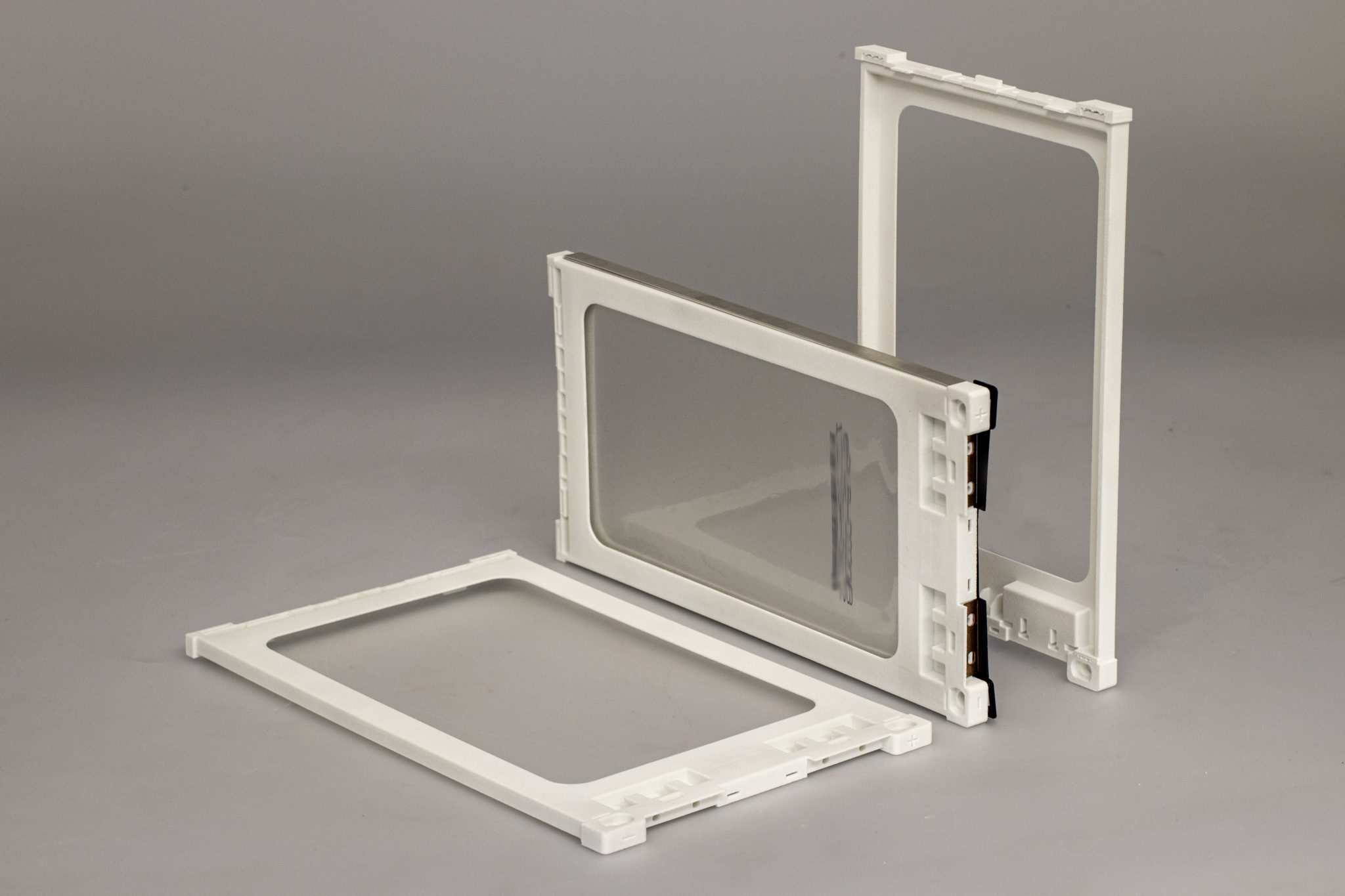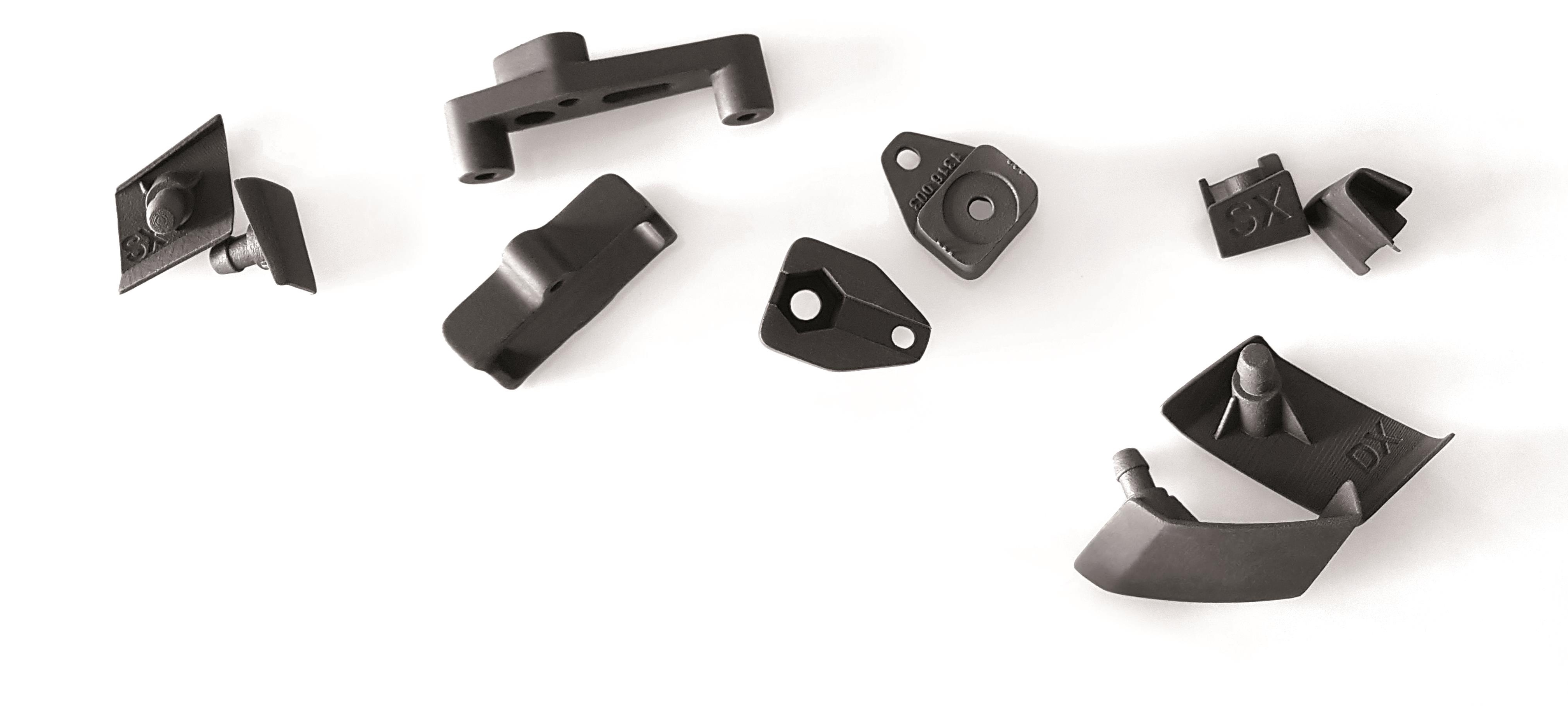Italian 3D printing materials manufacturer CRP Technology has launched a new material in its Windform TOP-LINE family of composite materials for additive manufacturing. Designed for the selective laser sintering (SLS) process, the Windform FR2 is a flame-retardant polyamide-based glass fiber reinforced material, intended for applications in aerospace, automotive and consumer goods.
The new Windform FR2 from CRP follows the release of the Windform FR1 in 2019, and the two materials differ in a number of ways, as explained by Franco Cevolini, VP and CTO at CRP Technology: “Only a few months ago we launched Windform® FR1, flame retardant carbon fiber reinforced material,” comments Cevolini.
“Now we introduced Windform® FR2, a flame retardant material which is glass fiber reinforced.”

Windform FR2
The first material in CRP’s flame-retardant line, the Windform FR1 is a carbon fiber reinforced polyamide-based material designed for applications in aircraft, aerospace, automotive and transportation, consumer goods and electronics.
As well as being reinforced with glass fiber, the new Windform FR2 is different from the previous material in its color. The FR2 is an off-white, whereas the color of the FR1 material is dark gray. Additionally, the Windform FR2 is electrically insulating, thanks to its glass fiber reinforcement. Compared to the Windform FR1, it provides improved detail resolution and a smoother surface finish after 3D printing. Both are polyamide-based which helps to provide wear resistance and good temperature resistance.
Thanks to its combination of flame-retardant and insulating properties, the FR2 can be used to manufacture parts like casings of electrical and electronic components in the automotive industry, or lighting and appliances for consumer goods. Ensuring its flame-retardancy, the material passed the FAR 25.853 12-second vertical and 15-second horizontal flammability tests as well as the 45° Bunsen burner test and Smoke density test.

Why develop flame-retardant materials?
CRP launched its Windform FR line in response to an apparent lack of flame-retardant materials in the industry that have been reinforced with other materials to improve their mechanical properties:
“Flame retardants are not new to the 3D printing market but flame-retardant materials which were also reinforced and presenting significant mechanical properties, lacked,” adds Cevolini. “We at CRP Technology were the first to fill this void; we have created not only the first material of its kind, but now two. In order to invent these materials, we must anticipate, intercept and satisfy the requests of the most demanding and innovative industrial sectors.”
As well as releasing a new addition to its Windform FR-line, CRP Technology also recently updated its P-Line of additive manufacturing materials, a range dedicated to High-Speed Sintering (HSS) technology. The Windform P2 is a glass fiber reinforced material designed for the production of small functional prototypes, as well as consumer, household, and industrial products.
CRP Technology’s Windform materials have been used to make parts for a number of different applications in recent times. It has been used to manufacture components for the Energica Ego, Italy’s first street-legal electric motorbike. The materials have also been leveraged to 3D print a 3U CubeSat by students at the Laboratoire InterUniversitaire des Système Atmosphérique (LISA) of Universite Paris-est Creteil (UPEC).
The nominations for the 2020 3D Printing Industry Awards are now open. Who do you think should make the shortlists for this year’s show? Have your say now.
Subscribe to the 3D Printing Industry newsletter for the latest news in additive manufacturing. You can also stay connected by following us on Twitter and liking us on Facebook.
Looking for a career in additive manufacturing? Visit 3D Printing Jobs for a selection of roles in the industry.
Featured image shows 3D printed battery cell holder. Photo via CRP.


